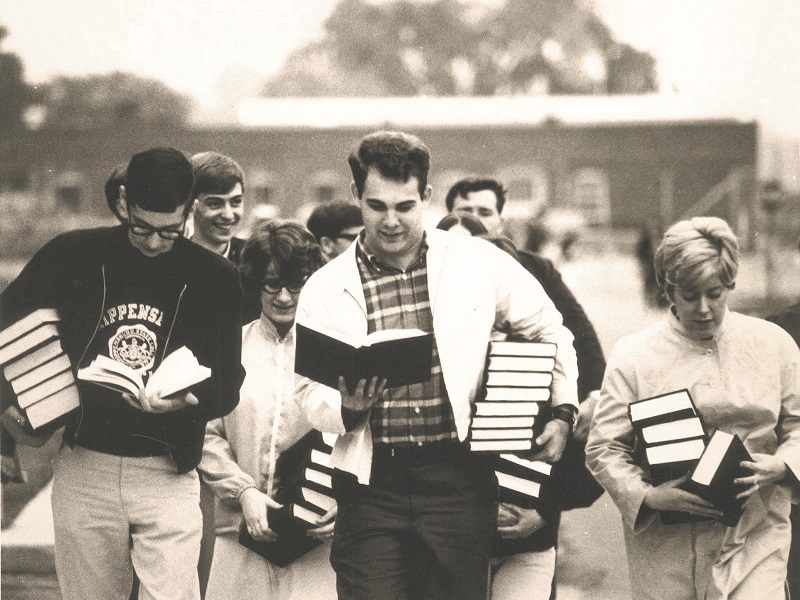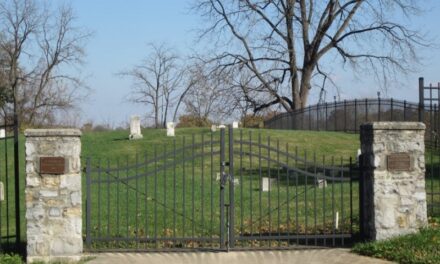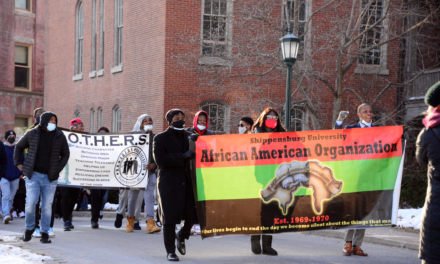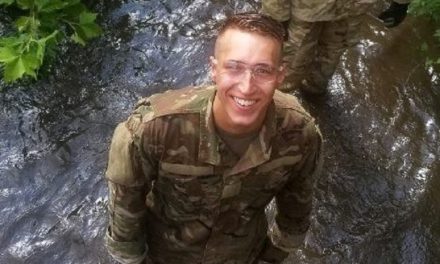This story first appeared in the Shippensburg University Magazine.
History of the library at Shippensburg University was provided by Karen Daniel, past university archivist.
Have a special memory of the library you want to share? Visit 150.ship.edu and share it with us!
Albert Einstein once said, “The only thing that you absolutely have to know, is the location of the library.” Thousands of Shippensburg University students have found the answers they seek through resources in the library, but not always in the same location.
The library and reading room of the Cumberland Valley State Normal School opened in the Old Main Chapel in 1873. It contained over two hundred volumes donated by publishers and government agencies, with residents in the Shippensburg community contributing the most. By the end of the first year, the collection of books and periodicals doubled in size.
With Chapel renovations in 1902 a new library was built to the rear of the Chapel. The space featured stained glass windows, oak tables and chairs and of course, more books. Two decades later a librarian was employed by the school and tasked with maintaining a perfectly quiet space. By 1930 the collection increased to 10,000 volumes and a second librarian was hired to assist students with research. An emphasis on the importance of the library led to the creation of a Library Methods course, formalizing the school’s commitment to research.
While the emphasis on the library and its collection continued to grow, then President Ezra Lehman recognized the space was not large enough to meet the needs of the expanding student population. Now known as the Shippensburg State Teachers College, the school, still under the leadership of Lehman, developed plans for a new library building.
Lehman would not see his plans fulfilled. He died unexpectedly in 1931, a year before the building, which is now the Huber Art Center, was completed. On November 12, 1932, the school, under the leadership of President Jesse S. Heiges, opened what would be the first, but not the last Ezra Lehman Memorial Library.
The new space housed 16,000 volumes with six newspapers and over 150 periodicals. It included seating for 200 students, with the lower level committed to reading and studying and the balcony floors set aside for upper class students. Books were stored on open stacks and organized by the Dewey Decimal system and found using a card catalog. Overdue books resulted in a one-cent a day fine.
In 1961 a new and larger space was needed once again and planning, led by librarians Alma Winton and Clara Bragg, began. This would be the library that would carry and sustain research at what would become Shippensburg University.
After an official ground breaking ceremony in 1966, the new Lehman Library was constructed in the center of campus, featuring it as the focal point of academic activity. Four times larger than the previous building it included air conditioning and a modular design to make the space more flexible. Winston, predicting the importance of future technology, made sure the design included electric outlets for future computers. The building also featured space for the University Archives and rare book collection.
The modern library
Fast forward to 2021, and the Lehman Library remains in the center of campus, with the library’s juvenile collection at home in the Grace B. Luhrs University Elementary School Library directly across the Quad.
It looks relatively the same from the outside, but inside, much has changed. The library’s collection grew rapidly over five decades and continues to grow.
“During our last survey we had just over 360,000 print books, serial back files, and other paper materials, and many more items available in eBook databases and collections,” said Dr. Michelle Foreman, dean of Libraries.
The amount of sound has increased as well. “Perfectly quiet” is no longer the goal.
According to Foreman the layout of the library now provides more space for collaborative work, as it is a popular gathering spot for group work. And the building that once banned liquids including bottles of ink, now allows beverages purchased at Starbucks, located in the storefront of the library.
Beyond Starbucks, in 2019, the library welcomed the Kathryn Hughes Seaber Raider Academic Center for Student Athletes to its first floor. The center provides support for the academic well-being of nearly 500 student-athletes.
The purpose of the library and the service it provides has changed drastically over time. Instead of one librarian serving the entire student population, a team of specialized faculty, staff and student employees provide direct support to students seven days a week during academic terms.
Laptops and computers are available for student use and unlike a few decades ago, they are at the center of library activity.
“Certainly, more research is done electronically today than many years ago. It is the norm for current students, but alumni from decades ago always reflect on how different the research process is from when they looked everything up in print and took notes by hand or photocopied pages,” said Foreman.
This research has always been at the forefront of the library’s purpose, but in a digital world full of instant information, Foreman says the library’s role in traditional research has shifted. No longer just focused on procuring, preserving and providing information, they now are helping students understand how to process the information they uncover.
According to Foreman, the library is focused on developing students’ information literacy and “the capacity to find the right sources for their needs and to be able to critically evaluate and utilize those sources.”
While research has and always will be at the core of the Lehman Library’s mission, Foreman is quick to remind patrons that the library is also a space to read for pleasure or find a quiet moment.
“In the lower level where the popular titles collection is housed, there are some nice soft furniture pieces and you are surrounded by exciting possibilities to read for pleasure. On the top level, for quiet nooks, I like some of the individual tables that are located around the walls of the room, particularly the ones that are tucked into the window-wells. At those tables students can work in privacy with a lovely view of the outdoors,” she said.
Three moves and hundreds of thousands of publications later, students at Ship know where they can go to find answers, Lehman Library.
Have a special memory of the library you want to share? Visit 150.ship.edu and share it with us!





